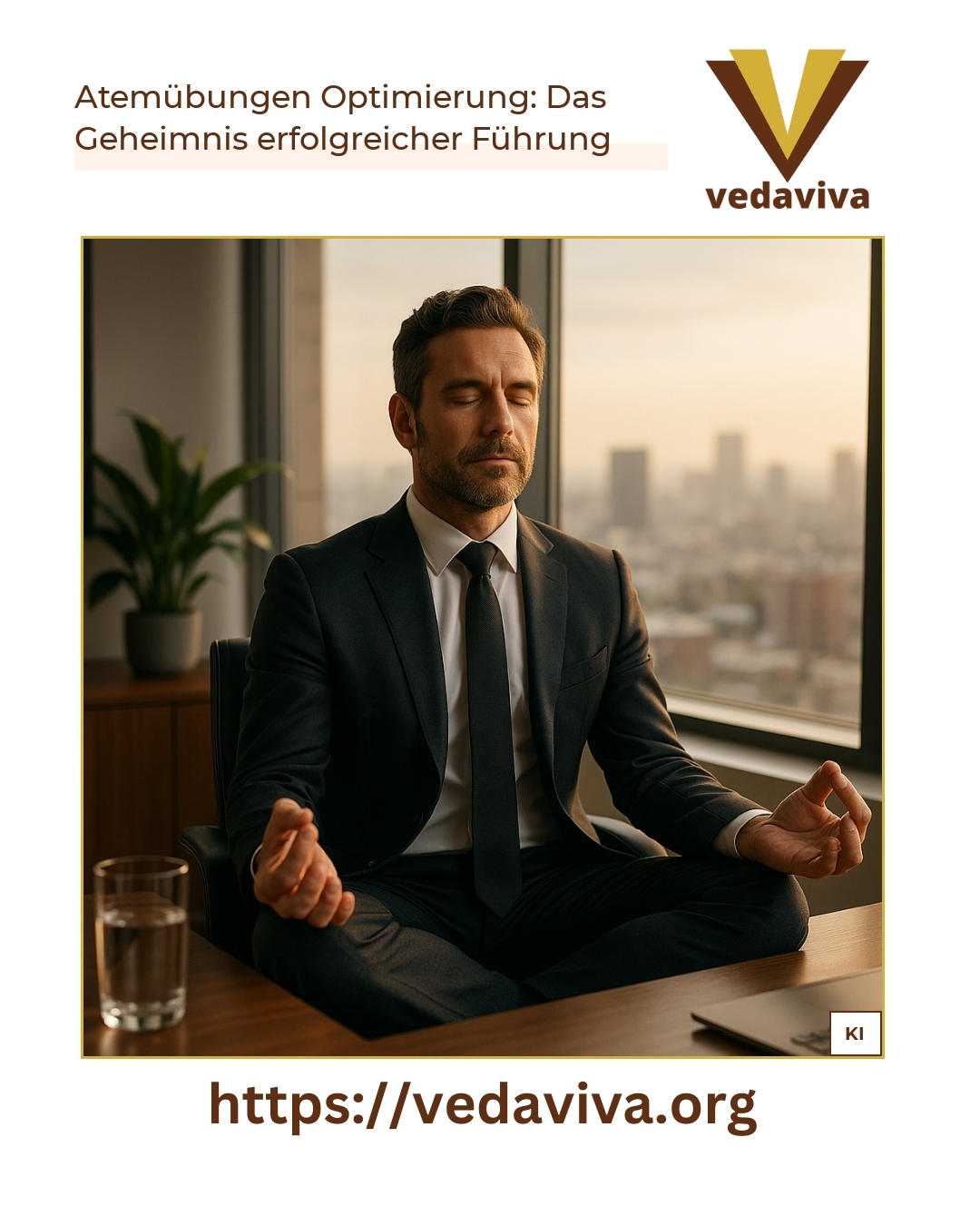How breathing exercises optimisation contributes to stronger leadership
Breathing exercises Optimisation is an underestimated resource that helps managers to gain more composure and clarity in the often stressful day-to-day management environment. By consciously training your breathing, you can not only increase your physical performance, but also improve your mental presence and reduce stress in the long term. Particularly in demanding situations, the conscious breathing technique promotes a focussed and confident demeanour, which is essential for successful leadership.
Targeted breathing exercise optimisation includes various techniques that make breathing more efficient, deeper and calmer. This improves the oxygen supply to the brain, which strengthens the ability to concentrate and make decisions. In addition, conscious breathing can regulate the nervous system, which in turn reduces susceptibility to stress and increases emotional stability. The combination of these effects ensures that leadership succeeds at a higher level.
Basics of breathing exercises Optimisation for managers
Abdominal breathing, also known as diaphragmatic breathing, is at the centre of breathing exercises for optimisation. This involves inhaling deeply through the nose so that the abdomen visibly expands and then lowers again when you exhale. This technique utilises the full volume of the lungs and activates the parasympathetic nervous system, which is responsible for rest and recovery. A tried and tested method is the 4-7-8 technique: inhale for four seconds, hold your breath for seven seconds and exhale for eight seconds. This exercise quickly brings inner calm to managers and helps to reduce tension.
Another component of breathing exercise optimisation is the lip brake, in which you exhale slowly against slight resistance through slightly closed lips. This technique supports prolonged exhalation, keeps the airways open and calms the breathing pattern. In everyday leadership situations, it promotes the ability to remain calm and clear even in hectic moments.
BEST PRACTICE at company XYZ (name changed due to NDA contract) One manager specifically integrated the lip brake into her daily breaks. As a result, she was able to better regulate stress-related breathlessness before important meetings. She reported a noticeably calmer presence and improved dialogue without losing the pressure of the situation.
Practical applications of breathing exercises Optimisation in everyday working life
Breathing exercises Optimisation can be easily and flexibly integrated into everyday working life. Short sequences of conscious breathing can be used before demanding conversations or presentations. The targeted control of breathing helps to focus attention, reduce nervousness and keep a clear head.
Some managers consciously use square breathing: the breathing phases inhale, hold, exhale and pause are each performed for four seconds. This method not only increases the ability to concentrate, but also has a refreshing and relaxing effect. Breathing exercises optimisation thus also offers a mental reset to tackle new challenges with freshness and clarity.
BEST PRACTICE at ABC (name changed due to NDA contract) In a medium-sized company, the division managers regularly practised breathing exercises between intensive sessions. They reported that conscious breathing helped them to reduce stress and deal with conflict situations more confidently. The measures were valued as a unifying element of a resilient management team.
Another important element of breathing exercise optimisation is training the respiratory muscles. The targeted strengthening of the diaphragm and the surrounding muscles promotes endurance and enables longer, relaxed breathing even in challenging situations. This physical foundation strengthens the ability to remain mentally present even under extreme stress.
Tips for sustainable integration of breathing exercises Optimisation
To really benefit from optimising breathing exercises, it is important to practise regularly and adapt the techniques to your own needs. A good way to start is to take short breathing breaks of five to ten minutes every day, in which you consciously breathe deeply and calmly. The 4-7-8 method can help you to find inner balance, especially during periods of intense stress.
Posture should also be optimised. Sitting upright with a relaxed chest and shoulders creates space for deeper breathing and supports the breathing volume. Managers can consciously remind themselves to breathe in and out, for example before meetings, on the phone or while walking around the office. In this way, breathing exercises optimisation becomes an integral part of everyday life.
BEST PRACTICE at start-up DEF (name changed due to NDA contract) In a dynamic environment, a young manager learnt to use breathing exercises to better control her impulsiveness in conflicts. By practising diaphragmatic breathing in the morning and consciously incorporating breathing breaks into the day, her resilience increased sustainably.
My analysis of the importance of breathing exercises Optimisation
Optimising breathing exercises provides managers with important impulses to effectively manage stress and increase their own performance. The conscious control of breathing has an effect on physical and mental well-being and supports clear, focussed action. Through regular practice, routines can be established that help to achieve greater composure and confidence in everyday life.
The integration of breathing exercises Optimisation is easy to implement and can be flexibly adapted to individual requirements using various techniques. It helps managers to become more self-aware and stay present in challenging situations - a valuable building block for sustainable leadership success.
Further links from the text above:
How you can improve your performance with breathing techniques [1]
Physiotherapeutic respiratory therapy to optimise breathing [2]
Reducing stress and anxiety at work with square breathing [3]
Legal notice: Coaching does not replace therapy. It serves personal development. I do not diagnose or promise a cure. My offer is for personal development and is not a substitute for medical, psychotherapeutic or curative treatment. Please consult a medically qualified specialist if you have any health complaints. The experiences described here are based on individual feedback from my clients. They are not a guarantee of success and do not replace medical or therapeutic counselling. For more information and if you have any questions, please contact Contact us on the topic or read further blog posts on the Topic here.













